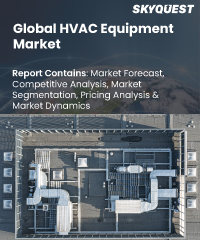
Report ID: SQMIG20D2141

Report ID:
SQMIG20D2141 |
Region:
Global |
Published Date: September, 2024
Pages:
202
|
Tables:
95 |
Figures:
76
Global HVAC Equipment Market is highly competitive, with several prominent players vying for market share. Key players in the industry consistently focus on innovation, research and development, and strategic partnerships to maintain a competitive edge. They offer a diverse range of HVAC equipment, including heating systems, cooling units, ventilation solutions, and integrated building management systems. Market players also emphasize energy efficiency, sustainability, and smart technologies to meet evolving customer demands and regulatory requirements. Additionally, mergers and acquisitions, product launches, and geographical expansions are common strategies employed by these companies to strengthen their market presence and cater to a global customer base. The competitive landscape of the HVAC equipment market is characterized by intense competition, technological advancements, and a strong emphasis on customer satisfaction and environmental sustainability.
HVAC Equipment Market Top Player’s Company Profile
HVAC Equipment Market
Our industry expert will work with you to provide you with customized data in a short amount of time.
REQUEST FREE CUSTOMIZATIONWant to customize this report? This report can be personalized according to your needs. Our analysts and industry experts will work directly with you to understand your requirements and provide you with customized data in a short amount of time. We offer $1000 worth of FREE customization at the time of purchase.

Report ID: SQMIG20D2141